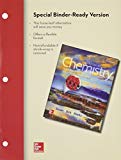
Concept explainers
(a)
Interpretation:
The concentration in parts per million
(a)
Explanation of Solution
Given Information: The
Parts per million is the ratio of the mass of solute and the mass of solution multiplied by
Parts per billion is the ratio of the mass of solute and the mass of solution multiplied by
Divide equation (1) by equation (2), to get the following relationship:
Substitute the ppb value in equation (3) to obtain the
So, the
Since EPA has fixed the maximum permissible level of nitrate ions in water to be
(b)
Interpretation:
The concentration of nitrate ions in
(b)
Explanation of Solution
Given Information: The
Parts per million is the ratio of the mass of solute and the mass of solution multiplied by
Since
So, the above equation may be written in the following manner also:
Given
Hence the concentration of nitrate ions in
(c)
Interpretation:
The mass of nitrate ions present in
(c)
Explanation of Solution
Given Information:
The mass of lead ions present in
So, the mass of nitrate ions present is
(d)
Interpretation:
The moles of nitrate ions present in
(d)
Explanation of Solution
Given Information: The mass of nitrate ions is
The number of moles is calculated as follows:
Hence,
Want to see more full solutions like this?
Chapter 11 Solutions
Combo: Loose Leaf for Introduction to Chemistry with Connect Access Card Chemistry with LearnSmart 1 Semester Access Card
 General Chemistry - Standalone book (MindTap Cour...ChemistryISBN:9781305580343Author:Steven D. Gammon, Ebbing, Darrell Ebbing, Steven D., Darrell; Gammon, Darrell Ebbing; Steven D. Gammon, Darrell D.; Gammon, Ebbing; Steven D. Gammon; DarrellPublisher:Cengage Learning
General Chemistry - Standalone book (MindTap Cour...ChemistryISBN:9781305580343Author:Steven D. Gammon, Ebbing, Darrell Ebbing, Steven D., Darrell; Gammon, Darrell Ebbing; Steven D. Gammon, Darrell D.; Gammon, Ebbing; Steven D. Gammon; DarrellPublisher:Cengage Learning ChemistryChemistryISBN:9781305957404Author:Steven S. Zumdahl, Susan A. Zumdahl, Donald J. DeCostePublisher:Cengage Learning
ChemistryChemistryISBN:9781305957404Author:Steven S. Zumdahl, Susan A. Zumdahl, Donald J. DeCostePublisher:Cengage Learning Chemistry: An Atoms First ApproachChemistryISBN:9781305079243Author:Steven S. Zumdahl, Susan A. ZumdahlPublisher:Cengage Learning
Chemistry: An Atoms First ApproachChemistryISBN:9781305079243Author:Steven S. Zumdahl, Susan A. ZumdahlPublisher:Cengage Learning
 Chemistry & Chemical ReactivityChemistryISBN:9781337399074Author:John C. Kotz, Paul M. Treichel, John Townsend, David TreichelPublisher:Cengage Learning
Chemistry & Chemical ReactivityChemistryISBN:9781337399074Author:John C. Kotz, Paul M. Treichel, John Townsend, David TreichelPublisher:Cengage Learning





